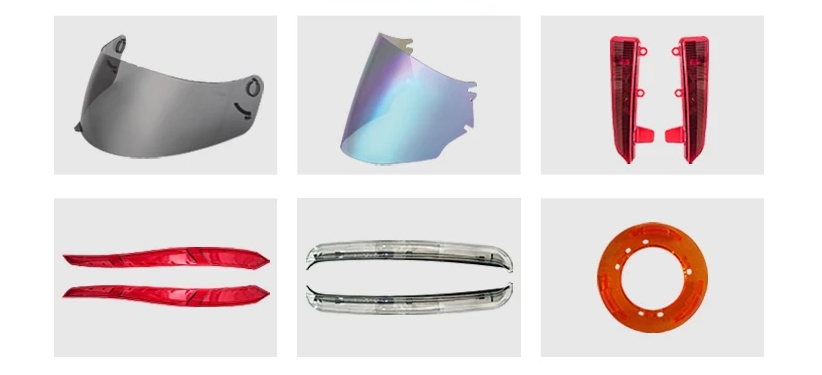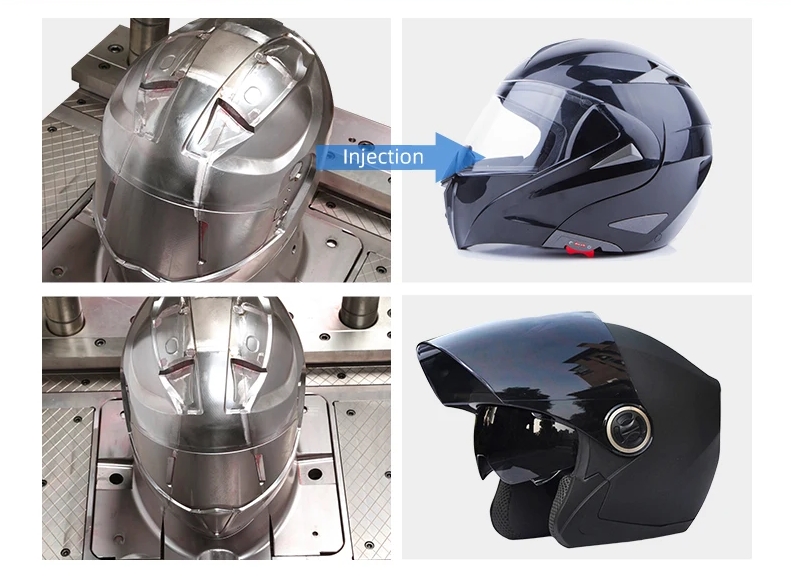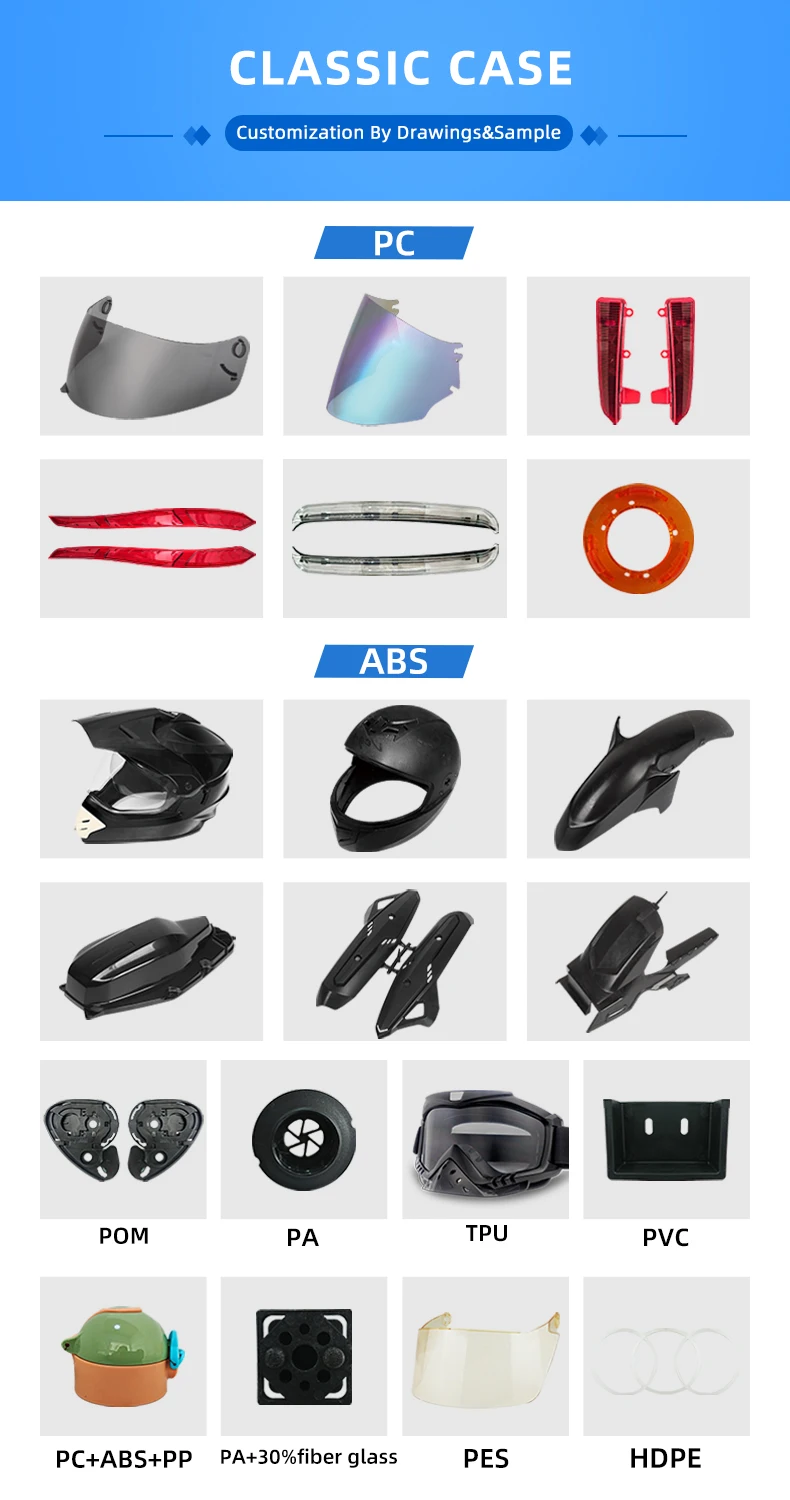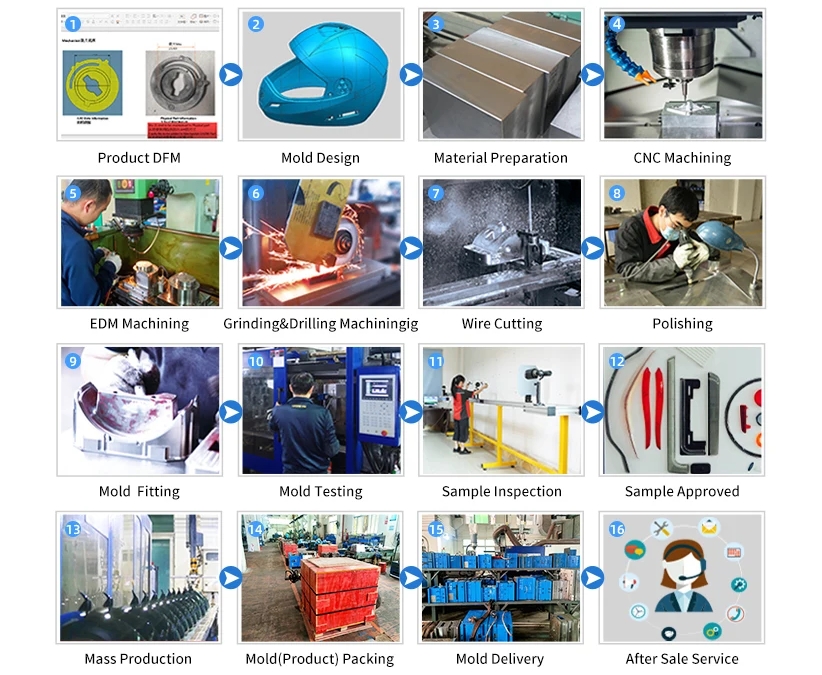Precision and durability are paramount in the world of motorcycle manufacturing. Every component, from the engine to the smallest bolt, must meet exacting standards to ensure safety and performance. Among these components, plastic parts play a crucial role, offering lightweight, resilient solutions for various applications. And behind the production of these parts lies a critical process: injection molding.
Injection Motorcycle Parts Mold
Injection molding is a manufacturing process used for producing parts by injecting molten material into a mold. In the context of motorcycles, plastic injection molds are instrumental in crafting components such as fairings, panels, handles, and more.
The process begins with the design phase, where engineers meticulously craft molds tailored to the specific requirements of motorcycle parts. This involves precise measurements, material selection, and consideration of factors like structural integrity and aesthetic appeal.
Injection Molded Motorcycle Parts
Injection molding is a versatile manufacturing process used to produce a wide range of motorcycle parts. These parts vary in complexity, size, and function, and they contribute to both the aesthetic appeal and functional performance of motorcycles.
Some common injection molded motorcycle parts include:
Fairings and Body Panels: Fairings are aerodynamic shells typically mounted on the front and sides of motorcycles to reduce drag and improve rider comfort. Body panels encompass various components such as side covers, fenders, and belly pans, providing protection and enhancing the overall appearance of the motorcycle.
Handlebar Grips: Injection molding allows for the production of ergonomic grips with varying textures and designs to suit different riding styles and preferences.
Fuel Tanks and Reservoirs: Many modern motorcycles feature injection-molded fuel tanks and reservoirs constructed from durable plastics like ABS or polyethylene. These tanks are lightweight, impact-resistant, and designed to withstand the rigors of prolonged use.
Seat Components: Injection molding is utilized to manufacture various seat components, including seat pans, bases, and trim pieces.
Air Intake Ducts and Covers: Injection-molded ducts and covers ensure precise fitment and durability while withstanding exposure to heat and vibration.
Electrical and Electronic Housings: Injection molding is commonly employed to produce housings for electrical and electronic components such as switches, connectors, and instrument panels.
Lighting Components: Injection-molded components are used in various lighting applications, including headlight housings, taillight lenses, turn signal indicators, and reflectors. These components ensure optimal light distribution, visibility, and durability on the road.
Fasteners and Mounting Hardware: Injection molding enables the production of fasteners, brackets, and mounting hardware used to secure various motorcycle components in place. These parts are crucial for structural integrity and assembly efficiency.
Exhaust Shields and Heat Guards: Exhaust shields and heat guards protect riders and surrounding components from excessive heat generated by the exhaust system. Injection molding allows for the creation of heat-resistant shields with intricate designs and integrated mounting features.
Accessory and Trim Pieces: Injection-molded parts are also used for a variety of accessory and trim pieces, including badges, emblems, tank pads, and trim accents. These components add visual flair and customization options to motorcycles, allowing riders to personalize their bikes according to their preferences.
Overall, injection-molded motorcycle parts play a vital role in enhancing the performance, aesthetics, and functionality of motorcycles, contributing to a safer, more enjoyable riding experience for enthusiasts worldwide.
Features of Injection Motorcycle Parts Mold
Materials and Durability
Motorcycle parts endure harsh conditions, including exposure to UV radiation, temperature fluctuations, and mechanical stress. Hence, selecting the right materials for injection motorcycle parts molds is crucial.
High-quality plastics like ABS (Acrylonitrile Butadiene Styrene) and polypropylene are commonly used for motorcycle components due to their strength, durability, and resistance to impact and abrasion.
Additionally, additives such as UV stabilizers and reinforcements may be incorporated into the mold material to enhance longevity and performance, ensuring that the finished parts can withstand the rigors of the road.
Precision Engineering
Injection motorcycle parts molds demand unparalleled precision to create components that fit seamlessly and function flawlessly within the motorcycle assembly.
Advanced CAD/CAM technologies enable engineers to design intricate mold cavities with tight tolerances, ensuring consistent quality and dimensional accuracy across production runs.
Techniques like mold flow analysis help optimize the mold design by simulating the flow of molten material during the injection process, identifying potential issues such as air traps or sink marks, and refining the mold accordingly.
Efficiency and Cost-Effectiveness
Injection molding offers numerous advantages in terms of efficiency and cost-effectiveness, making it the preferred method for manufacturing motorcycle parts.
The high-speed production capabilities of injection molding allow for rapid turnaround times, enabling manufacturers to meet tight production schedules and respond promptly to market demands.
Furthermore, the ability to produce complex geometries in a single operation reduces the need for secondary processes, minimizing waste and streamlining production, ultimately translating into cost savings for manufacturers.
Quality Assurance and Compliance
Quality control is paramount in the production of motorcycle parts to ensure that they meet industry standards for safety, performance, and reliability.
Injection molding facilitates rigorous quality assurance processes, with automated systems monitoring key parameters such as temperature, pressure, and injection speed to maintain consistency and detect any deviations.
Manufacturers must adhere to regulatory requirements and industry standards governing the production of motorcycle components, certifying that the parts meet all necessary criteria for use on the road.
Innovations and Future Trends
The field of injection motorcycle parts mold continues to evolve with advancements in materials, technologies, and manufacturing processes.
Additive manufacturing, such as 3D printing, is gaining traction for prototyping and producing custom molds with intricate designs and complex geometries, offering greater flexibility and shorter lead times.
The integration of IoT (Internet of Things) technology allows for real-time monitoring and optimization of injection molding processes, enhancing efficiency, and quality control.
In conclusion, injection motorcycle parts mold is a critical aspect of motorcycle manufacturing, enabling the production of high-quality plastic components that meet the stringent demands of the industry.
Recognizing the diverse needs of the motorcycle accessory market, RUNKE MOLD offers customizable molds that cater to different design specifications and styles. Whether it's fairings, mirrors, tank covers, or other essential components, our injection motorcycle parts mold can be tailored to suit individual requirements, enabling manufacturers to produce an extensive range of accessories to meet customer demands. Contact us right now and find the perfect solution for your project.




.jpg)

.jpg)